Potato Pests
ENTFACT-304: Potato Pests | Download PDF
by Ric Bessin, Extension Specialist
University of Kentucky College of Agriculture
The local market for potatoes from Kentucky has resulted in increased interest in the crop by potential growers. Growing a new crop often means dealing with a different pest complex. This publication was prepared to provide information on the biology, identification and control of potato pests. More on specific information on insecticides is available from https://publications.ca.uky.edu/files/ID36.pdf.
Soil Insects
Soil insects, primarily wireworms and white grubs, can severely damage seed pieces and tubers. These insects feed on grass roots and should be considered as a serious threat when potatoes are to be grown in ground immediately following sod.
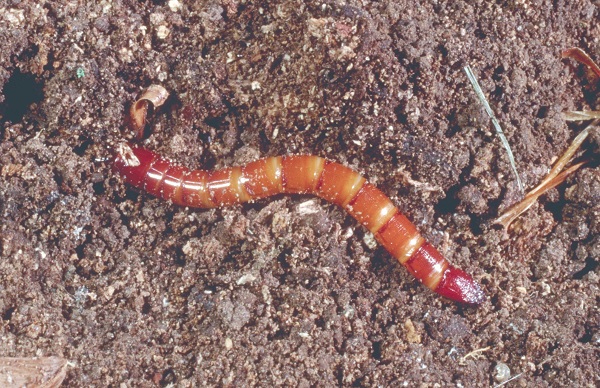
Figure 1. Wireworm damage leaves holes in tubers.
In these situations, a pre-plant broadcast application of a soil insecticide should be considered. For best results, treat after soil temperature at the six inch depth has reached 50°F. By this time soil insects should be active and nearer the surface.
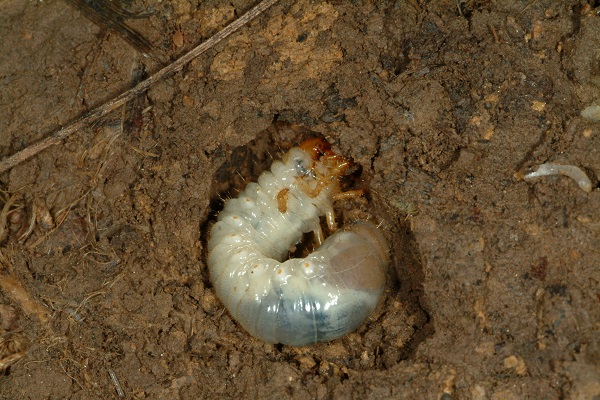
Figure 2. White grubs produce large holes in tubers.
The threat of damage by soil insects is lessened with time out of sod. Because some wireworms and grubs spend two or more years in the soil a problem may still occur. A planting-time soil treatment should be sufficient in these cases.
Above-Ground Pests
Colorado Potato Beetle
The common black and yellow-striped "potato bug", a very familiar insect, is the most serious pest of potatoes. Both the adult, or beetle, and the black-spotted, red larva feed on potato leaves. Their damage can greatly reduce yield and even kill plants.
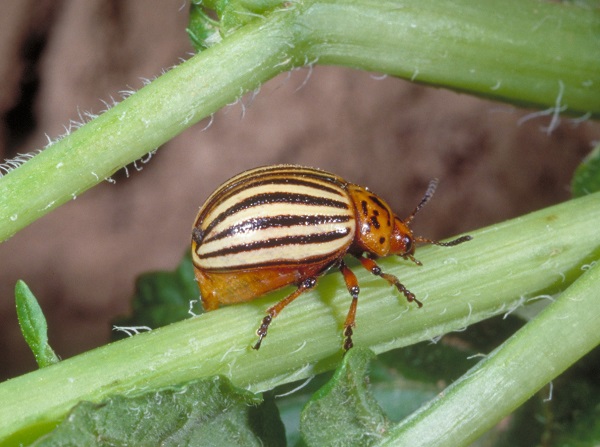
Figure 3. Colorado potato beetle has alternating black and white stripes on its wing covers.
In addition to potato, Colorado potato beetle can be a serious pest of tomato, eggplant, and pepper. Colorado potato beetle overwinters in the soil as adults. The Colorado potato beetle is a yellow insect with alternating black and white strips down its back. They become active again in the spring and feed on weeds and volunteer on early-planted potatoes. They will even enter the soil to attack emerging foliage. Female beetles lay batches of about two dozen orange-yellow eggs on the underside of the leaves. Each female can lay 500 or more eggs over a four to five week period. The eggs hatch in four to nine days and the larvae begin to feed on potato foliage. The larvae are humpbacked with two rows of black spots. The larvae usually feed in groups and damage can be severe. The larval stage lasts two to three weeks.
Full grown larvae move to the ground and change into an inactive or pupal stage. In five to 10 days the new adult beetles emerge. This insect can go from egg to adult in as little as 21 days. They feed for a few days, before egg laying begins. There are two full and occasionally a partial third generation each year. If foliar sprays are used, an effort should be made to treat after most eggs have hatched but before serious plant damage occurs.
This insect is notorious for development of resistance to insecticides over short periods of time. A rotation among different classes of insecticides is recommended to discourage resistance. There is a new commercially available strain of Bacillius thuringiensis (var tenebrionis) that are effective against small larvae (less than 1/4 inch) and should be applied at egg hatch or when larvae are first seen. A premature treatment may lose much of its effectiveness before the eggs hatch. An insect growth regulator, called Align, has also been released for control of this insect. It is an extract of the neem seed that prevent the insect from developing normally.
The Colorado potato beetle, Leptinotarsa decemlineata, can be easily confused with its close cousin the false potato beetle, Leptinotarsa juncta. While these two insects look nearly identical, only the Colorado potato beetle is a serious pest. While the adult false potato beetle has alternating black and white strips on its back as well, one of the white strips in the center of each wing cover is missing and replaced by a light brown strip. The eggs are slightly larger and fewer found in a cluster. The humpbacked larva is similar, but with only one row of dark spots on each side. False potato beetles are frequently found feeding on some solanaceous weeds, such as horsenettle, but do no growth and reproduction occurs when feeding on potato.
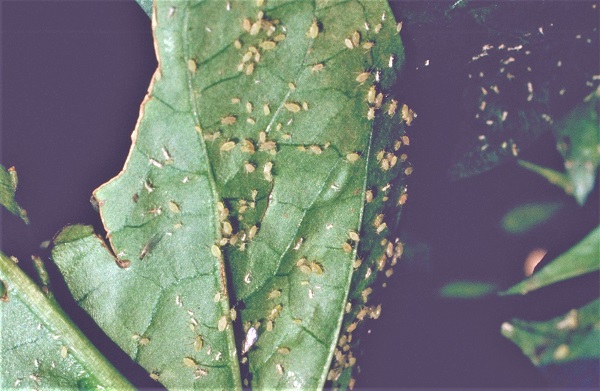
Figure 4. In some years aphids can be problematic.
Aphids
Winged aphids may move into potato fields in significant numbers. These migrants settle on the leaves and begin to remove plant sap. During this period they are also capable of producing large numbers of wingless aphids that in turn place an even greater stress on plants.
Distorted leaves and "sticky" leaf surfaces are signs of aphid infestation. Natural enemies and diseases can often keep aphid populations under control. Limiting the use of broad-spectrum insecticides will conserve predators and parasites that help keep aphid populations under control.
Potato Leafhopper
Potato leafhoppers are wedge-shaped, 1/8-inch long, green, active insects. They use their piercing-sucking mouthparts to remove sap from the potato leaf. These small insects fly readily. Because of their small size and habit of feeding on the underside of the leaf, they are easily overlooked.
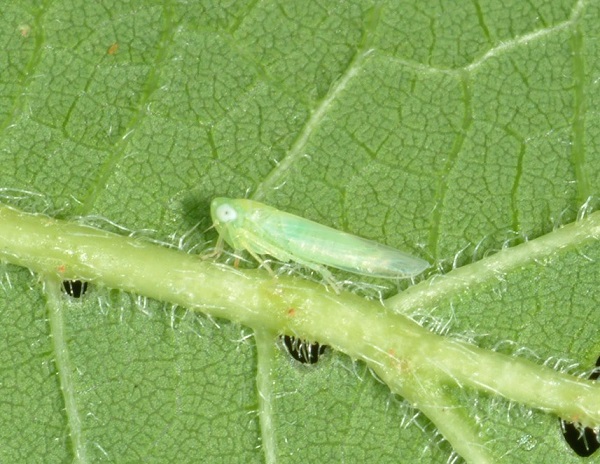
Figure 5. Potato leafhopper migrates from southern overwintering areas each summer.
The symptom of leafhopper activity is more apparent - a triangular brown spot at the tip of the leaf. Similar triangles may appear at the end of each lateral veinlet or the entire margin may roll upward as though scorched. These symptoms are known as "hopperburn". Other conditions may produce similar symptoms. Check the underside of leaves for the tiny leafhoppers to confirm that they are the cause of the problem.
Potato leafhoppers do not overwinter in Kentucky. Winds carry them into the state each year from the Gulf Coast. They generally appear between May 25 and June 5. Within a few days after mating, females lay their eggs in the stems and larger leaf veins of succulent plants. The eggs hatch in about 10 days into the immature or nymphal stage. The light green, wedge-shaped nymphs are smaller than the adults and do not have wings. Both stages are very active. Adults jump or fly readily when disturbed while the nymphs run sideways across the leaf and over the edge.
Development from egg to adult takes about three weeks in warm weather. Very large leafhopper populations can build up in a short time during the summer.
Occasional Pests
A variety of other insects may be numerous at times. Control decisions should be based on the extent of the infestation in the field and the severity of damage.
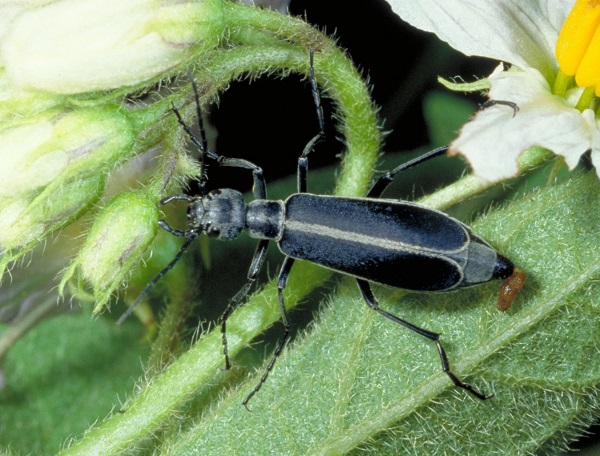
Figure 6. Blister beetles can attack a variety of vegetables.
Blister beetles are narrow, elongate insects. They may be found feeding in clusters on potato leaves. Infestations are usually localized within fields and treatment of an entire field is seldom necessary. Rarely do blister beetles do enough damage damage to cause any yield loss.
Hornworms are easily identified and will feed on potato foliage. These worms can consume large amounts of foliage but severe infestations are not likely to occur. Hormworms can easily be controlled using any of the insecticides containing Bacillus thuringiensis var kurstaki. Rarely do hormworms cause losses to potato yields.
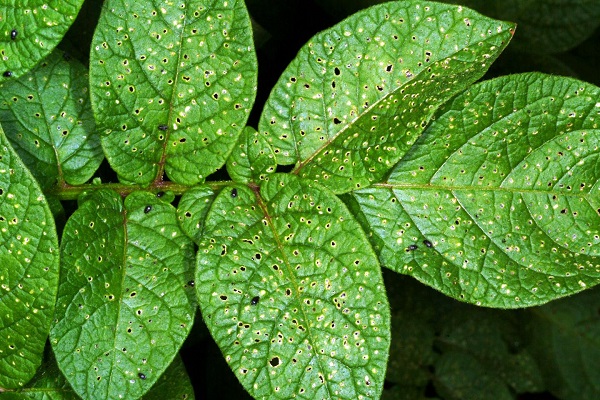
Figure 7. Flea beetles leave characteristic small round holes in leaves.
Flea beetles cause the small shot-hole damage to leaves. These tiny beetles overwinter as adults and may appear in fields very early in the season and cause serious damage to young plants. Sevin provides very good control of flea beetles when they are numerous on small plants.
Systemic Insecticides
Planting time use of systemic insecticides allows protection against moderate levels of soil insects plus activity against leaf-feeding pests such as aphids, leafhoppers and flea beetles. Insecticidal effects are generally greatest during the early part of the growing season. Read the label thoroughly and observe pre-harvest intervals carefully.
Foliar Sprays
A variety of insecticides may be used on potatoes to control insect pests. Repeated sprays may be needed in some years, especially against late season pests. See https://publications.ca.uky.edu/files/ID36.pdf for recommendations.
Colorado Potato Beetle Resistance Management
The Colorado potato beetle is notorious for its ability to rapidly develop resistance to insecticides that are used repeatedly to control it. This has been a serious problem on the east coast for some time, and is becoming more of a problem in Kentucky. With a more limited number of available insecticides, some homeowners feel they have exhausted their control options.
Resistance develops more rapidly to an insecticide when that insecticide is used repeatedly as the only control measure. Often over use of one insecticide may favor the development of resistance to other insecticides in the same chemical class. Insecticides in the same chemical class usually have the same mode of action, i.e. the same method of killing the insect. Consequently, to delay or prevent resistance it is important to avoid repeated usage of one particular insecticide by rotating the insecticides used. Rotation needs to be among different classes of insecticides.
Other control measures such as hand picking of adult beetles and immature stages will also aid to delay the development of resistance. Resistance by Colorado potato beetles should be managed on a field-to-field basis. While they may be resistance to one insecticide in a particular field, those in other fields within the same county may not have developed resistance to that insecticide.
Revised: 11/19
CAUTION! Pesticide recommendations in this publication are registered for use in Kentucky, USA ONLY! The use of some products may not be legal in your state or country. Please check with your local county agent or regulatory official before using any pesticide mentioned in this publication.
Of course, ALWAYS READ AND FOLLOW LABEL DIRECTIONS FOR SAFE USE OF ANY PESTICIDE!
Photos courtesy Ric Bessin, University of Kentucky Entomology
